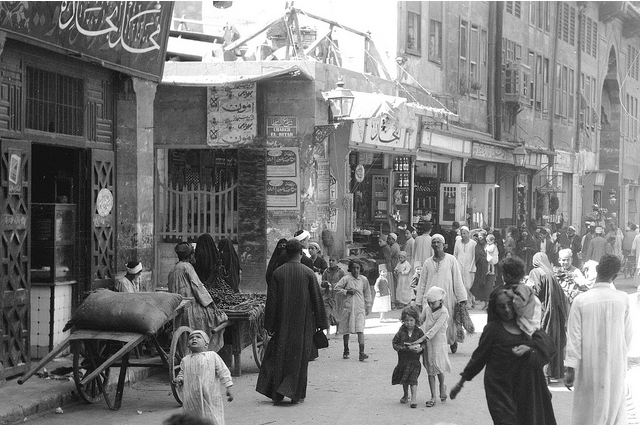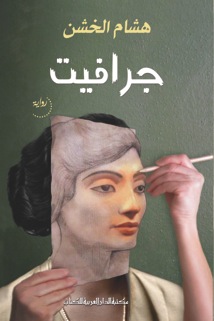
On the pages of Graphite, Hisham El Kheshen’s historical fiction, I was transported back in time and space to the early decades of the 20th century (1928 to be precise), when momentous changes were happening in Egypt and around the world.
The novel is set between Egypt and France, then the epicenter of arts, music and literature. And the winds of change were blowing across the Mediterranean to the Egyptian capital.
In Graphite, not only does El Kheshen offer comparisons of the two societies, he also closely dissects Egypt’s, highlighting two major occurrences: the emancipation of women and the birth of the Muslim Brotherhood, which has spawned political Islam. Among the many changes happening in society at the time, El Kheshen adopted these two issues as the main themes of the novel.
Nawal Aref, the novel’s leading character, finishes her baccalaureate in the French school of La Mere de Dieu and is handpicked by the Ministry of Education along with 12 girls to receive a scholarship to complete their undergraduate studies in Europe.
Through the life of this 18-year-old girl, the author takes us on a journey inside the colorful tableau of the early 20th century society that has shaped Egyptian identity, which he has masterfully painted.
 Generational conflict is manifested in the relationship between Nawal Aref and her grandmother, who is still chained by restrictions that were inherited from previous generations. Adhering to the status quo, she objects to her granddaughter’s wishes of studying abroad.
Generational conflict is manifested in the relationship between Nawal Aref and her grandmother, who is still chained by restrictions that were inherited from previous generations. Adhering to the status quo, she objects to her granddaughter’s wishes of studying abroad.
Contrary to his mother’s attitude, it is Aref’s father who, in defiance of family tradition, not only gives his blessings for his daughter to travel, but is actually the one who sought his French boss’s connections to nominate his daughter for the scholarship.
Among the 12 students granted scholarships to France and England is Doreya Shafik, who upon returning from France with her degree, plays an important role in the liberation of Egyptian women in the twentieth century. Unlike Nawal, Doreya Shafik was a real person. El Kheshen’s literally skills shine in his blending of both fictitious and real characters, weaving together fictional events with historical facts without disrupting the dramatic context of the story.
We are introduced to Nawal’s cousin Bahiga, whose character El Kheshen uses to enhance Nawal’s by exposing her as her contrast. Bahiga Aref is a hybrid of her grandmother and her mother. In contrast to Nawal, Bahiga receives a modest education and her only ambition in life is to get married and have kids. Following her grandmother’s advice, the success of Bahiga’s traditional marriage is fueled by her body and gourmet cooking.
Bahiga Aref leads to the second story line, which is the birth and emergence of the Muslim Brotherhood. Here, the author also brings to life the real characters of Hassan Al Banna, the founder of the Muslim Brotherhood, and Ahmed El Sokary, its first secretary.
Through their fictitious friendship with Helmy El Ahwany, Bahiga’s husband, we learn how the Muslim Brotherhood organization was created, how they attracted members and how they pledged their allegiance to their leader.
Historical fiction is more difficult to write. It burdens writers with more challenges because while they have to adhere to historical facts, they still have to produce compelling stories that are attractive to readers, without losing the credibility of being historically accurate. Even fictitious characters in a historical fiction have to reflect their surroundings with precision.
And thus, the author has to be committed to accurately portraying the cultural, political and social ingredients that depict the chosen era. El Kheshen in Graphite successfully transports the reader to the imaginary yet historical world of the turn of the century.
Among the diverse characters in the novel, we meet the Armenian Livon Karkourian, the Jewish Yacoub Moushe, Haj Abdel Alim El Ahwany, Safwat Mohtar the lawyer, and Dimitra and Elena, the daughters of the Greek barber. But these characters that were meticulously developed were not the only protagonists of the novel. The entire Egyptian society, as portrayed by the author, plays an important role.
At this time in history, Egyptian society was a multicultural home to diverse ethnicities, religions and races. Muslims, Christians and Jews all lived in a harmony that was disrupted with the birth of the Muslim Brotherhood and the consequences that followed, which changed the political, social and religious map of Egypt. Until then, Egypt was a tapestry woven from the unique and colorful cultures of the time.
The author manages to penetrate inside this society, floating between its colorful threads and reflecting the essence that knits together the events of the novel. The reader wanders through the world of finance and trade, worships in mosques, visits the meeting rooms of the Muslim Brotherhood, gambles at poker tables and indulges in wine, attends weddings in the Greek Church and bar mitzvahs in the Jewish quarters.

Graphite is a visual novel. The language is rich, the story flows smoothly, the details do not clutter the pages and the senses are well utilized. El Kheshen is in control of his tools like a professional movie director. The scenes are filled with colors, shades of light and sounds.
His talent resides in his ability to use both his creative and scientific skills in composing his novels. With his engineering background, El Kheshen’s literary and linguistic talent is enhanced by his organized and analytical style, which keeps evolving with every book he writes. El Kheshen doesn’t only describe places or narrate information; his fast-paced writing immerses the reader in dramatic details to live the experience along with the characters.
Minute details captivate me and Graphite was full of them. The author wasted no effort in developing even the trivial characters that have no effect on the dramatic flow of the novel. His thoroughness proves how the success of a story relies on all the little details combined together.
In the opening scene, the author writes a few lines about the Vietnamese daughter-in-law of the French woman who owned the boarding house where Nawal lived for a brief period of time. The Vietnamese girl could have passed unnoticed by many. While she had no importance to the dramatic context, it reveals the author’s attention to detail in clarifying the time frame in which the events of the novel unfolded. Historically, the events of the novel coincide with the time when Vietnam was still a French colony.
And Nawal’s character arc evolves as the story progresses. She becomes the embodiment of the Egyptian woman – and with the freedoms and rights that were bestowed upon women, Nawal rids herself of her traditional shackles and flies away from her cage.
While the story is set at the turn of the last century, its events are strikingly similar to those unfolding in Egyptian society today. Every woman should read this novel to appreciate the rights she enjoys and to understand the struggles, humiliation and suffering that her predecessors endured to bring her these rights.
Yet, even though it is about women, the story is compelling and informative for all audiences. Graphite is a page-turning novel that is highly recommended.
WE SAID THIS: In case you missed it, check out our recommendations for #ReadingWomen2014!


